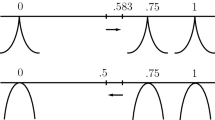Abstract.
This is a model of a contest where, in order to win, each opponent can use two instruments. The probabilities of winning are explored, as well as the expenditures of the interest groups, and the relative rent-dissipation in both cases where the players have the option to use only one instrument (the standard Tullock contest) and where the players have the option to use two instruments in the contest. We show that the use of two instruments strengthens the player with the higher stake, decreases the relative rent dissipation and it decreases total expenditure if the parties are sufficiently asymmetric.
Similar content being viewed by others
Author information
Authors and Affiliations
Additional information
Received: February 23, 2001 / Accepted: March 25, 2002
RID="*"
ID="*" We are grateful to two anonymous referees and the editor Kai Konrad, for constructive comments.
Rights and permissions
About this article
Cite this article
Epstein, G., Hefeker, C. Lobbying contests with alternative instruments. Econ Gov 4, 81–89 (2003). https://doi.org/10.1007/s101010200049
Issue Date:
DOI: https://doi.org/10.1007/s101010200049




